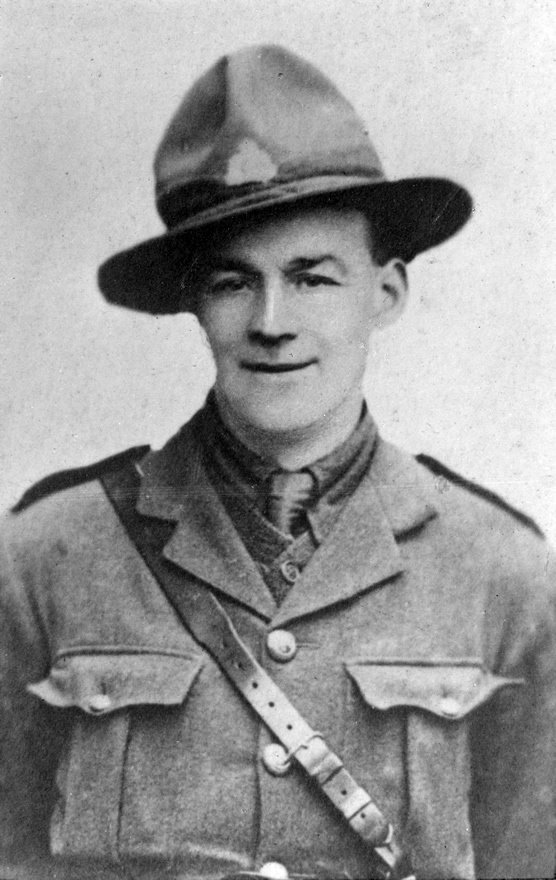
Jesse Rodgers, No. 9/77
2nd Battalion, Otago Infantry Regiment
Died of wounds, 30 July 1917
Born in Oamaru in 1887, Jesse Rodgers was the seventh of Thomas and Jane Rodgers’ eight children. He was educated locally and after completing his schooling worked for the Railways Department and then with his father as a stonemason, before taking up employment as a motor mechanic. Of average height, with light brown hair and eyes, Jesse was a member of the local Volunteer Fire Brigade, the Oamaru Boating Club and Athletic Football Club.
Six days after the declaration of war in 1914, Jesse enlisted as a trooper in the Otago Mounted Rifles. He left New Zealand with the Main Body and served at Gallipoli, where his leadership abilities were recognised by promotion first to corporal and then to temporary sergeant. In March 1916 he transferred to the Otago Infantry Regiment, in which he was confirmed as a sergeant before departing for France with the New Zealand Division.
On the Western Front Jesse continued to prove himself, earning a Military Medal and promotion to second lieutenant in the Battle of the Somme. He fought alongside Donald Brown in the action which won Brown his Victoria Cross, and some felt Jesse should have been similarly rewarded. His courage and composure were widely admired by the men he fought with. William Taylor wrote that Jesse was ‘the bravest man I ever met’ and that ‘his steadiness helped us through many a bad patch.’ [1] Jesse – now a temporary captain – was wounded at Messines in June 1917, but refused to leave his post to seek treatment until his company was relieved. For this he received the Military Cross.
On 22 July 1917, while in a forward position near Messines, Jesse was hit in the head by a shell fragment. He was admitted to a casualty clearing station where, eight days later, he died of his wounds. He was 30 years old. In a letter to Jesse’s parents, a fellow officer related how he was carried to his grave by the men of his company, ‘for all looked on the 10th as his company. He was their sergeant, their lieutenant, and their captain all in one. He had been through everything with them, understood them, and was beloved by them.’ [2] Jesse’s grave lies in the Trois Arbres Cemetery, in Steenwerck, France and he is remembered on the First World War memorial at St Luke’s Anglican Church in Oamaru.
Further information
Auckland War Memorial Museum Online Cenotaph record - Jesse Rodgers
Commonwealth War Graves Commission record - Jesse Rodgers
Oamaru Mail, 6 August 1917, p. 3
'Late Captain Rodgers', Oamaru Mail, 13 August 1917, p. 1
'The Late Captain Rodgers', North Otago Times, 13 August 1917, p. 2
'Captain Rodgers' End', Oamaru Mail, 3 October 1917, p. 3
'Captain Jesse Rodgers', Oamaru Mail, 30 October 1917, p. 4
'Battle Honours', Evening Post, 25 March 1918, p. 3
A.E. Byrne, Official history of the Otago Regiment, N.Z.E.F., in the Great War 1914–1918, J. Wilkie & Co., Dunedin, 1921
Glyn Harper, Johnny Enzed: the New Zealand soldier in the First World War 1914–1918, Exisle Publishing Limited, Auckland, 2015
[1] William Taylor, The twilight hour: a personal account of World War I, Sutherland, Morrinsville, NZ, 1978, p. 52, as quoted in Glyn Harper, Johnny Enzed: the New Zealand soldier in the First World War 1914–1918, Exisle Publishing Limited, Auckland, 2015, p. 377.
[2] ‘Captain Jesse Rodgers’, Oamaru Mail, 30 October 1917, p. 4.

Community contributions